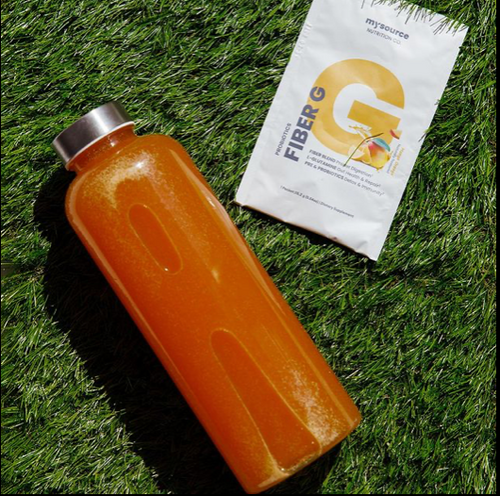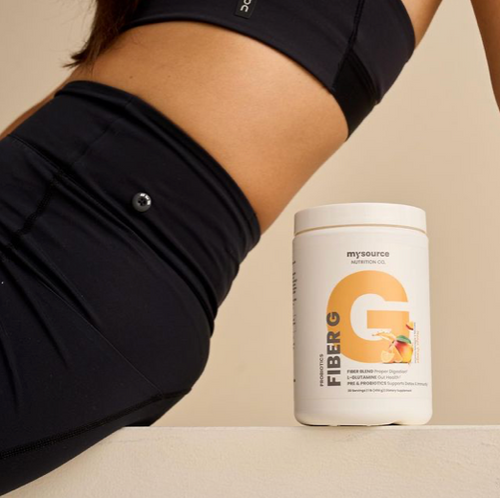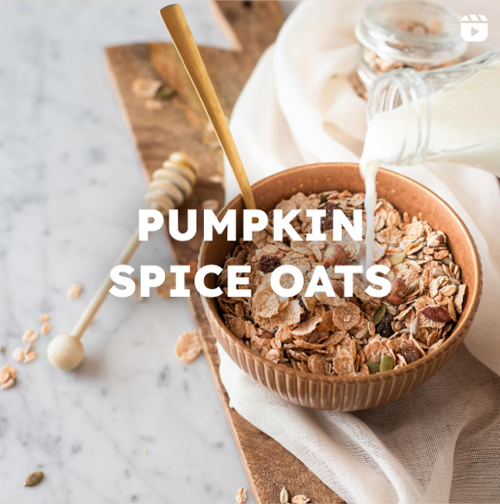If you consider your belly a problem zone and are looking to get a flat stomach, your are definately not alone. Most of us know the issue and even if we have already lost a decent amout of weight, we still might feel bloated and uncomfortable. Thats why we had a closer look at this challenge and summarized our findings in 5 tips for a flat stomach.
#1: Figuring out what foods you are allergic or sensitive to
Why do I get bloated after eating?
Bloating is often caused by an excessive build-up of intestinal gas which can be uncomfortable and embarrassing. Bacteria in the digestive tract generates this gas from food which has not been properly digested or absorbed.
What causes bloating?
A build-up of gas in the stomach and intestines is primarily the most common cause of bloating. Bloating can be accompanied by either mild discomfort all the way to sharp bursts of intense pain. People who experience bloating report that they feel as though something is trapped inside their stomach. You may feel that your stomach appears puffy and stretched.
So what is responsible for bloating? Unfortunately there is no single answer; however, here are some of the most popular causes of bloating.
- IBS – while bloating is not suffered by all those with IBS, it is a very common symptom of the condition.
- Food intolerance – if you regularly feel bloated and have been feeling so for a long period of time, this could mean that you have food intolerance. This can manifest itself in three ways: Firstly, too much gas may be produced in reaction to the food. Secondly as a result of food intolerance, your bowel may not empty properly and thirdly the food may cause the gas to be trapped.
While this is by no means an exhaustive list of reasons why you may be bloated, these common causes may give you some insight into what is causing you so much pain. If you are concerned about your bloating you should get checked out by your GP.
What are the symtoms of bloating?
Typical bloating symptoms include:
- Stomach feeling tight, painful or distended after eating
- A feeling of uncomfortable ‘trapped wind’ in the stomach
- Gurgling sounds in the stomach
- May experience sharp abdominal pains
What foods cause bloating?
It is reported that there are some foods which are known to produce more gas than others. Foods that can cause bloating are: Beans, Wheat, Onions, Garlic and Lentils.
The best way to figure out what foods you are sensitive/allergic to is by:
- Keeping track of your trigger foods with the help of a food journal
- Trying an eliminating diet
- Checking for food sensitivities/allergies with a at home testing kit or at a testing facility
Figuring out which foods cause digestive distress or bloating can be a great way to start cleaning out your pantry.

#2: Stay hydrated
Water - We all know that we should be drinking adequate amounts of it and yet most people still have a very hard time staying hydrated throughout the day. In case you need a reminder: Hydration is a key component in digestive health and it also affects almost all of the major systems in the body. Not only does water help to break down the food you eat, but it also allows the nutrients to be absorbed by your body and removes waste and toxins through the digestive tract. In other words, water helps to keep things moving. If you struggle with bloating, constipation, or other gut related issues, pay closer attention to your daily water intake. Also keep in mind that other factors such as physical activity, excess amount of caffeine and alcohol can further promote dehydration.
How much water is recommend per day?
The U.S. National Academies of Sciences, Engineering, and Medicine determined that an adequate daily fluid intake is:
- About 15.5 cups (3.7 liters) of fluids a day for men
- About 11.5 cups (2.7 liters) of fluids a day for women
However, keep in mind that depending on your daily activity levels, the environment you live in and other genetic related factors, may require you to consume more water than recommended. Typically your body will give you indications (dark urine, headaches, lack of energy, thirst etc.) when you are dehydrated and more fluid is needed.
If plain old water doesn’t excite you, try adding some natural flavoring into your water. For example, consider adding fresh berries, lemon or mint can be a great way to add some flavor and may help to stimulate your thirst. Another helpful way to boost your hydration levels is to consume foods that are rich in water. Examples include cucumbers, strawberries, watermelon, lettuce, spinach and tomatoes. Whatever trick works for you, be consistent until it becomes effortless and after a few weeks you will notice that your body will start to crave more water.
#3: Take regular walks after your meals
In many households, including in India, it is a ritual to step out for a walk after dinner before hitting the sheets. Many also take a quick walk after lunch. The goal? To improve digestion. But, is walking after eating really beneficial for digestion? Turns out it is, and here's why:
After you finish your meals, your body gets to work, it breaks down and absorbs the nutrients. A significant portion of the food breakdown or digestion takes place in the small intestine. Research suggests that walking after a meal can help in the faster transit of food from the stomach and into the small intestine.
How does this help? "The faster the food transits from your stomach into the small intestine, the lesser is you the likelihood of common complaints like bloating, gas, and acid reflux. Evidence also indicates that a post-meal 30-minute walk, coupled with routine exercise, can improve bowel function and lower the chances of constipation.
Postprandial walks not only ease digestive symptoms but can be quite beneficial for individuals with type-2 diabetes. Research from the New Zealand's University of Otago indicates that for people with type-2 diabetes, walking after meals is better at reducing blood sugar levels, especially following carb-rich meals. How does that happen? The body converts food into glucose, which is a major source of energy for the body.

#4: Don't stress about it! Period bloat is normal
Bloating is a common early symptom of menstruation that many women experience. It may feel like you’ve gained weight or like your abdomen or other parts of your body are tight or even swollen.
Bloating generally occurs well before your period starts and will go away once you’ve been menstruating for a few days. You may not be able to prevent bloating completely, but there are some home-based treatments you can try to reduce it.
- Skip over-the-counter laxatives - Relying on laxatives to relieve constipation can cause harmful side effects long-term, as well as, dehydration.
- Opt for natural teas that act as diuretics and are known to calm the stomach and alleviate bloating - Dandelion Root Tea, Licorice Tea, Ginger Tea and Chamomile Tea are known to calm the stomach, excrete excess fluid and aid in digestion.
- Take a fiber supplement - Taking a fiber supplement prior to the week of your period can be extremely helpful to keep digestion moving and to alleviate bloating and/or constipation. Click here to purchase Fiber G (A 3-1 Fiber supplement that contains 5 powerful fiber sources, 5g of L-Glutamine, as well as, Probiotics)
- Eat foods that act as natural diuretics - Asparagus, Lemons, Celery, Cucumber, Watermelons, Bell Peppers

#5: Don't mistake stomach fat & feeling bloated
What is belly bloating?
Belly bloating occurs when your stomach becomes swollen with fluid or gas. Belly bloat is usually temporary, and it causes a person to feel uncomfortable and extremely full for longer. The most common causes for bloating include high-fiber foods like beans, dairy products, overeating, consuming too much salt, swallowing air, and chewing gum.
Unlike excess fat and skin, which require more involved treatments, belly-bloating can be addressed with probiotics, eating fermented foods, peppermint tea, and avoiding dairy products.
What is belly fat?
Belly fat refers to the excess abdominal fat that happens gradually as you consume more calories than you can burn off. If you have excess body fat around your midsection, you likely have loose skin too.
How to tell the differnce between belly bloating vs. excess fat and skin?
Bloating is localized while belly fat is widespread: One easy way to tell the difference between bloating and belly fat is that, with bloating, only the stomach expands due to the excess gas accumulation. You will likely notice other bulges with excess fat, particularly on the abdomen, thighs, hips, and back.
Bloating is tight while belly fat is spongy: Tightness in the stomach is a sign of bloating. Stomach fat will feel spongy and malleable and can be grasped physically in your hand—something you can’t do with bloating.
Bloating keeps fluctuating while belly fat is constant: Another distinct difference is that, with bloating, your stomach expands wildly throughout the day. Belly fat and excess skin remain constant while the buildup of fat is gradual.
Bloating is painful while belly fat is painless: Due to the excess accumulation of fluid and gas in the abdomen, bloating is often accompanied by physical discomfort. Belly fat, on the other hand, is painless.
Although there are a few things you can do to shed off excess fat and reduce loose skin, such as proper nutrition and exercise, in certain cases, you may need to undergo a body contouring procedure.

Welcome to MySource Nutrition
We are happy to welcome you to our community. Say goodbye to occasional constipation, bloating, sugar cravings and other gut related issues with MySource's Fiber G.








